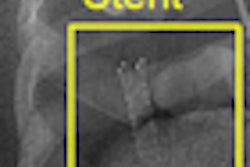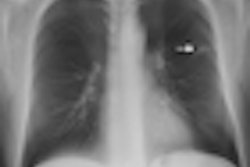When balancing the risks of radiation dose exposure from CT angiography with the risks associated with a cardiac catheterization procedure, pediatric radiologists in Taiwan are selecting the CT exam for neonates with complex congenital heart disease. The procedure is noninvasive and fast and requires minimal or no sedation.
In a study of neonates who underwent this procedure at Sin Lau Hospital in Madou, Taiwan, during calendar years 2007 and 2008, a multidisciplinary team of cardiac specialists determined that the CT scans helped delineate cardiac abnormalities in 98% of the cases. Study findings were published in the August issue of Pediatrics and Neonatology (2010, Vol. 51:4, pp. 227-234).
The medical records of 41 neonates, who ranged in age from 1 to 30 days, were evaluated by a team of congenital heart disease specialists. The team, which included pediatric cardiologists, cardiac radiologists, and a cardiac surgeon, aimed to determine the clinical usefulness of CT and 3D images in anatomical delineation of extracardiac vascular abnormalities. Forty of the 41 reports were confirmed through clinical and surgical findings.
Sixteen-slice CT (Sensation 16, Siemens Healthcare, Erlangen, Germany) and 64-slice CT (Aquilion 64, Toshiba America Medical Systems, Tustin, CA) were utilized for five and 36 patients, respectively. Contrast was determined by body weight and injected at 0.06 mL/kg/sec. Effective scan times for a single exam were less than a minute, and none of the neonates experienced circulatory or respiratory collapse during the procedure, according to lead author Yew Giin Long, MD, of the department of pediatrics at Sin Lau Hospital, and colleagues.
As a result of the CT findings, 35 patients received palliative shunt procedures or complete repair surgery, and four patients underwent evaluation for vascular ring. By substituting CT exams for cardiac catheterization, potential problems such as pneumonia, atelectasis, bronchogenic cysts, pulmonary embolism, pneumothorax, and pulmonary edema were avoided for these fragile infants.
By Cynthia E. Keen
AuntMinnie.com staff writer
August 26, 2010
Related Reading
3D CTA reveals neonate cardiac anomalies when echo results uncertain, October 12, 2004
Copyright © 2010 AuntMinnie.com



















